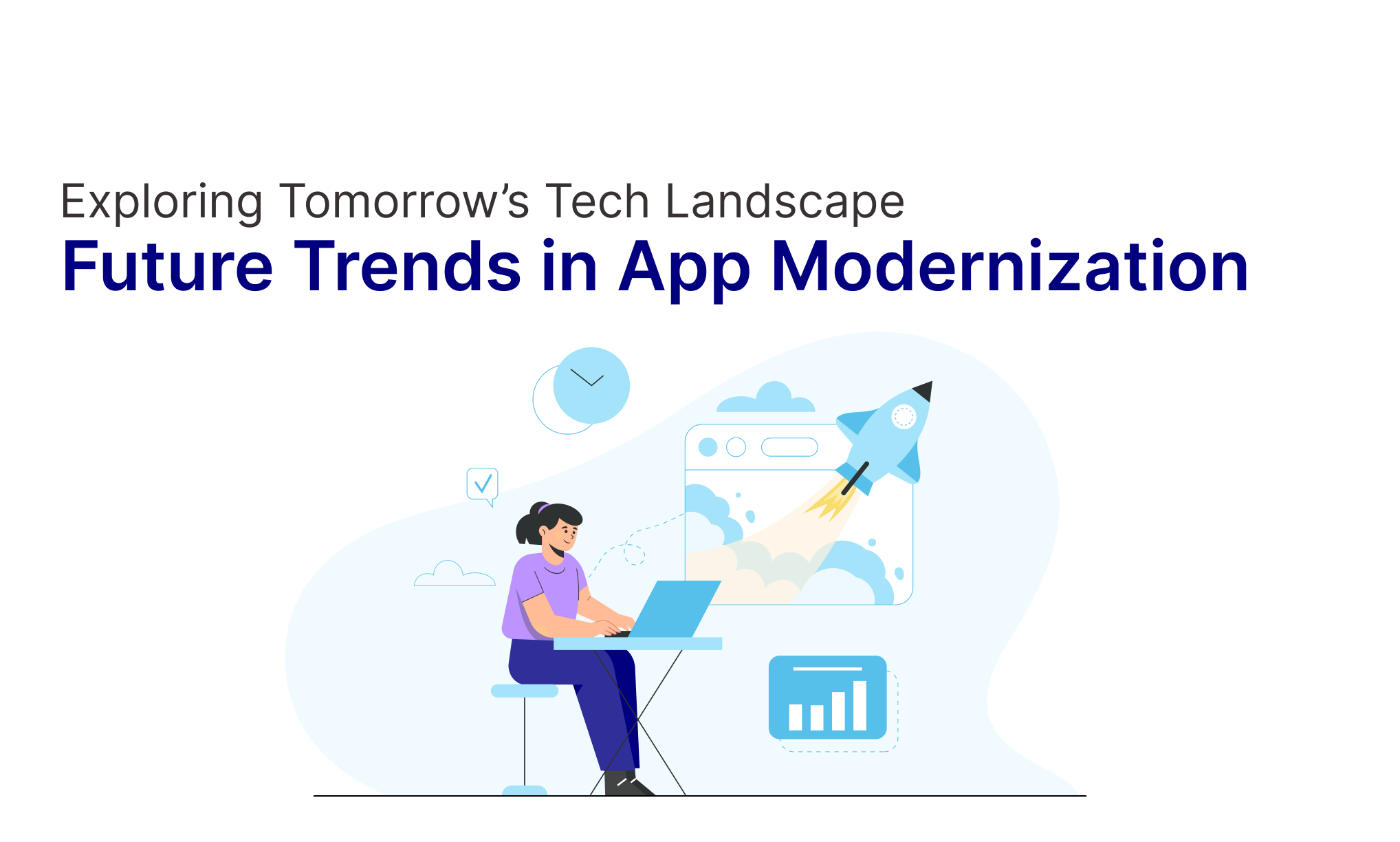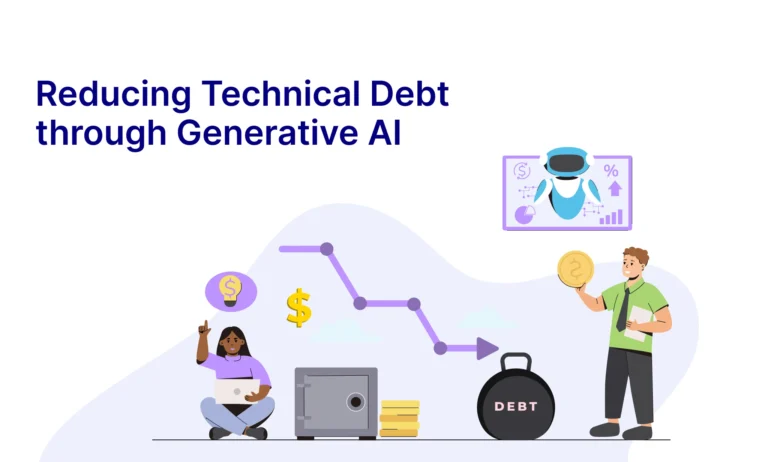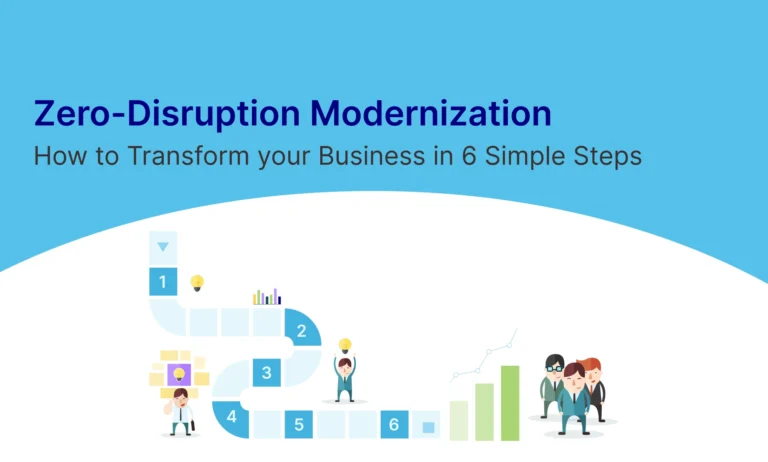Table of Contents
Modernizing legacy systems is no longer just a checkbox for enterprises. It’s the foundation for agility, innovation, and resilience in the digital-first world. But as technology and user expectations evolve rapidly, app modernization isn’t a one-and-done activity. It’s a continuous journey.
So, what’s next on this path? What trends will shape the way we rethink and rebuild apps for the future?
Let’s dive into the key trends that are defining the future of app modernization:
1. AI-First Modernization
We’ve moved from mobile-first to cloud-first, and now we’re entering an AI-first era. Enterprises are looking beyond integrating AI as a feature; they’re embedding it as the core. Legacy applications are being refactored to leverage.
- Predictive analytics
- Intelligent automation
- Conversational AI
Expect modernization efforts to increasingly revolve around AI-native architectures, reshaping how apps understand, interact, and adapt.
Design implication: Human-centered design will play a key role in aligning AI intelligence with user trust and control.

AI is no longer an add-on—it’s becoming the foundation of modern apps.
2. Composable Architecture & Microservices Evolution
Modular design has moved from a trend to a necessity. Composable architecture and advanced microservices allow businesses to build applications like LEGO blocks- flexible, scalable, and reusable.
• Services are now being refactored to domain-driven components
• Containers and orchestration tools (like Kubernetes) are getting smarter
• APIs are designed with interoperability as a baseline
This trend enables rapid updates, personalized experiences, and faster innovation cycles.
UX impact: Designers must account for independent service behaviors that could affect the overall user flow and consistency.

Composable architecture enables faster, flexible, and scalable innovation.
3. Low-Code/No-Code Empowerment
The rise of citizen developers is changing the game. Low-code/no-code platforms are helping enterprises modernize apps faster and cheaper, while enabling business teams to take part in building tools they use daily.
While these platforms won’t replace custom development, they are becoming a key accelerator for:
• Prototyping modernization use cases
• Replacing legacy utilities with simple tools
• Democratizing internal digital transformation
Collaboration shift: UX and dev teams will need to co-create with non-technical stakeholders more frequently.

Low-code platforms are putting modernization power in more hands
4. Cloud-Native + Multi-Cloud Strategies
Cloud is no longer just about migration—it’s about native enablement and vendor flexibility. As companies modernize, they are opting for:
• Cloud-native development from scratch
• Re-architecting to break monoliths into scalable functions
• Multi-cloud or hybrid strategies to avoid vendor lock-in
Apps are being designed for resilience, elasticity, and global reach—baked into the architecture from day one.
Design note: UX needs to be adaptive across geographies, networks, and platforms as global scaling becomes seamless.

Cloud-native and multi-cloud strategies are enabling global agility.
5. Legacy UX Overhaul with Modern Design Systems
Modernization isn’t only backend-deep. The user experience of legacy systems is getting a much-needed facelift—cleaner UIs, responsive designs, accessibility upgrades, and unified design languages.
Design systems are now being built to:
• Speed up re-skinning of old apps
• Maintain consistency across modernized modules
• Scale effortlessly as modernization expands
Design opportunity: Retrofitting UX isn’t enough. It’s about rethinking journeys and crafting modern workflows from scratch.

Modernizing UX means rethinking journeys, not just redesigning screens
Wrapping Up: A Future-Ready Mindset
App modernization is no longer about just keeping up with change. It’s about enabling it. Whether through AI-powered systems, composable architecture, or inclusive design, future-ready modernization means building systems that are agile, intelligent, and user-focused from the core.
At Byteridge, we’re excited to be part of this transformation- helping businesses not just rewrite code, but reimagine the future.








